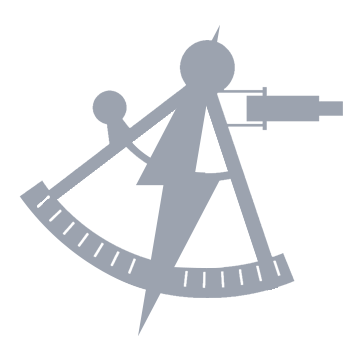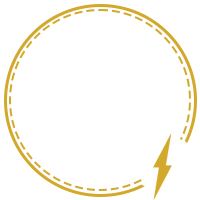Their world would die. That’s how Ensign Lunaire had put it. A bit melodramatic for his tastes, but not wholly inaccurate. Slumped at his desk, Dr. Karl Verhoeven stared blankly at his terminal. There had to be a way. There always was. But how?
And then it dawned on him.
There was something he hadn’t thought of until now. An anomaly he hadn’t considered until now. One that might hold the key. He just needed some help. He sat up in his chair and tapped his combadge: “Computer, get me Lieutenant Sh’vot, USS Polaris.”
The problem with Lepia IV had evolved beyond pathology and microbiology. It had become a problem of planetary ecology, and if anyone would have the answers there, it was Syleth Sh’vot. While a mere lieutenant as far as Starfleet was concerned, Dr. Sh’vot held a doctorate from the Vulcan Science Academy and had a long and illustrious career in the field of terraforming prior to picking up a pair of pips. And that, really, was what was happening here. Captain Lee had it right when she’d noted the mycopathogen was terraforming the planet in its image, so why not call the old terraformer?
After a few moments waiting, the seal of the United Federation of Planets vanished, replaced by the blue face of an elder Andorian. Like Dr. Verhoeven, he sat alone in his dark quarters, his shift aboard the Polaris having ended hours ago.
“Do you realize what time it is, Karl?” Dr. Sh’vot opened, his tone more amused than frustrated. This wasn’t the first time one of his academic peers had called in the wee hours of the night. One’s greatest thinking often happened after everyone climbed into bed.
“On a thirty-two hour cycle, I have no idea,” Dr. Verhoeven teased, their relationship quite familial after the last year spent together in the Advanced Science, Technology and Research Activity. “Could be the middle of your day, for all I know.”
“It’s funny you say that because, whether on account of my advanced age or a lifelong circadian entrainment to Federation standard, my sleep cycle has begun to converge on a 24-hour rhythm,” Dr. Sh’vot laughed. “I’ve been talking with Henderson about us maybe conducting a study on this experience.”
“Of course you have,” Dr. Verhoeven laughed. Although ASTRA had among the highest concentrations of academics on one ship anywhere in the fleet, the aged Andorian’s curriculum vitae put the rest of them to shame, both in its sheer length and the breadth of its publications, which ranged from geophysics to biochemistry to aeronomy. “While I’d love to ride along as third author, I’ve got something more pressing and closer to your actual discipline to talk about.”
“Oh, do you?” the Andorian raised his eyebrow. The Polaris was presently in the midst of an archaeological dig on a rather unremarkable class M world, and given the reports coming back from Verhoeven and Brunell about Lepia IV, he regretted not joining them when the Ingenuity had torn away from the squadron to link up with the Kennedy.
“Have you seen my notes regarding our present situation?” Dr. Verhoeven asked.
“Of course,” nodded Dr. Sh’vot. “Not much else to do here while Taylor and Larsen play in the dirt.” The xenoarchaeologist and the director were enjoying themselves, but while most planets could hold his interest, this one was particularly mundane. “You seem to have found quite a fascinating example of horizontal gene transfer, and most certainly something worthy of consideration by the Federation Terraform Command in future operations.”
“Yes, well that specifically is why I’m calling,” Dr. Verhoeven explained. “The mycopathogenic presentation is, as expected, more pronounced in arable areas, but my model cannot account for the variability between anthropogenic and natural ecologies solely by way of soil fertilization, organic turnover and mechanical dispersal. Even the lands of a deceased farmer, unmanaged for the past decade, exhibit non-normal acceleration versus the natural baseline.”
“Heterogeneity and competitiveness in the natural ecosystem would seem the most likely explanation, would it not?” Dr. Sh’vot supposed. Healthy soil was full of life that competed for resources, while cultivation and management left fewer antagonists to suppress a hostile species like the fungal blight.
“Exactly my thinking,” agreed Dr. Verhoeven, a twinkle in his eye.
“Where are you going with this?” Dr. Sh’vot asked curiously.
“The fungal strain’s reliance on the hijacked genes may actually be a vulnerability here,” Dr. Verhoeven hypothesized.
“Thinking about trying to outcompete it?” Dr. Sh’vot smiled, realizing where this was going. He recognized his colleague was essentially proposing out-terraforming the fungus. Now he really wished he had joined them on their excursion to Lepia IV.
“That’s the idea,” Dr. Verhoeven nodded. “Given that the blight’s pervasiveness comes from the genes it integrated, why not exploit that dependency? We just need something that competes with it for root exudates and interferes with nitrogen-fixation signals through quorum quenching.”
“There might be something there,” Dr. Sh’vot’s said as he turned the question over in his head. “Synthetic microbial consortia have been a necessity in soil engineering as long as terraforming has been a thing, but in the early days, the use of overly efficient microbes befuddled efforts, in some cases even triggering runaway eutrophication that caused complete ecological collapse.” That’d led to the abrupt end of more than a few early projects.
“Sounds eerily familiar,” Dr. Verhoeven sighed. It sounded almost identical, in fact, and Lepia IV was almost guaranteed to meet the same fate unless they did something to stop it. “What was it you guys did to manage this?”
“You guys?!” Dr. Sh’vot scoffed sarcastically. “How old do you think I am, Karl?” His projects in the sixties, such as New Halana and Blue Horizon, had used a more measured and elongated process to glide to soil equilibrium. “If I recall correctly though, before my forebearers learned self control, they used to use regulator organisms to brute force equilibrium.”
“And could that work here?” Dr. Verhoeven asked hopefully.
Dr. Sh’vot’s fingers flew across a PADD as he searched the archives. And then he found it. “I’ll do you one better, Karl.” He hit send. “Check your PADD. Not only will this one compete, but it even excretes low-grade antifungal enzymes when exposed to nitrogen-overactive soils.”
“You’ve got to be kidding me…” Dr. Verhoeven shook his head as he looked at the data coming across the link. “This thing is perfect, almost like it was designed exactly for this.”
“Few problems are truly novel,” Dr. Sh’vot mused. “Sometimes you just gotta ask someone old enough to remember.”

 Bravo Fleet
Bravo Fleet








